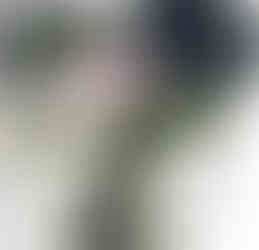- Rosa Chang
- Aug 24
- 2 min read
Edith Sandstöm (left) | Indigo samples submitted by Samorn Sanixay
Indigo Shade Map is excited to share an open call from Edith Sandström, who recently began a postdoctoral research project using stable isotope mass spectrometry to study the provenance of heritage dyes. Her work begins with indigo and madder, exploring how this method might reveal not only dye identification but also insights into provenance, trade relations, and cultural exchange.
To build this research, Edith is seeking geographically diverse, well-documented reference materials of indigo and madder. She invites the natural dye community to contribute small samples (~1 g) from any part of the process—plant material, extraction baths, or dyed objects.
Below is Edith’s full message with details on how you can contribute:
Full message from Edith Sandström:
Hello all,
My name is Edith Sandström and in May I began my postdoctoral research project
using stable isotope mass spectrometry to help determine provenance of heritage
objects, starting with indigo and madder (https://data.snf.ch/grants/grant/216127).
We want to explore if this technique let us go beyond dye identification and could
help our understanding of provenance, trade relations and cultural exchange. For
this, we need geographically diverse, well-documented indigo and madder reference
materials.
Therefore, I was wondering (and hoping!) that you in the dye community would be
willing to send around 1 g of any indigo and madder material you have/will collect
(any and all parts of the process, including plant material, extraction bath or dyed
objects) to help with the method development and building of the initial reference
map. It would be great if you could include the location of the garden, if fertilizers
have been used, the likely origin of the soil and potential fertilizers, as well as the
likely origin of any additives (e.g. lime) that have been added to the sample you
send.
I am more than happy to arrange an online meeting to explain my project further or
just explain more in an email to anyone interested. I will cover all shipping costs, and
I also have access to laboratory equipment, so I will be able to run some analyses in
return if wanted. Please contact me with any questions: edith.sandstroem@hefr.ch
Thank you to Rosa for letting me put out this open call and to all that is willing and
able to share their hard-earned material and knowledge. It is deeply appreciated!
All the best,
Edith



















